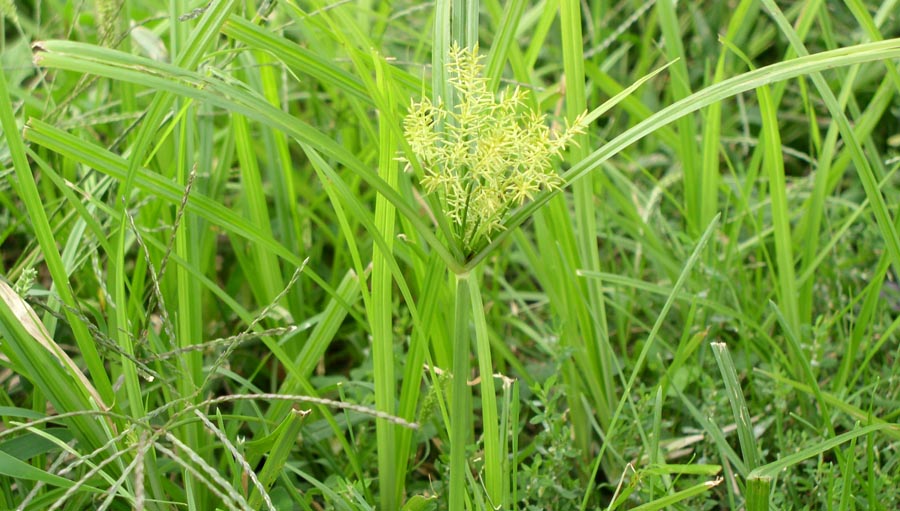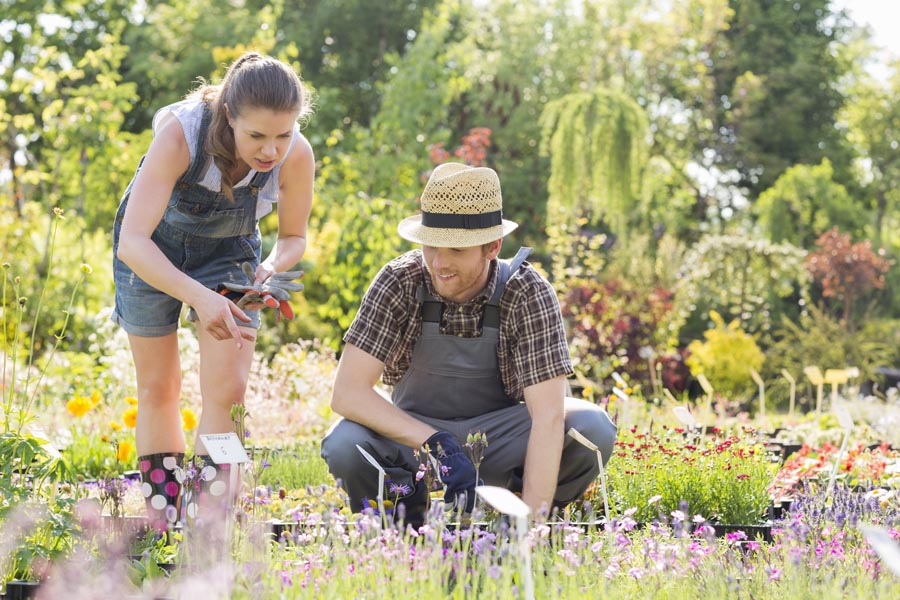
Water grass seems like just part of the lawn family. Sometimes, if you don’t look closely, you won’t even realize that there are weeds in your midst. But know that this weed could be detrimental to the health of your lawn, or other plants for that matter.
Read on for tips on how to get rid of water grass.
What Is Water Grass?
First, there is no one species that is referred to as water grass. This has been a term used to refer to grass-like plants that can be considered as weeds.
Basically, if you had an intention of growing grass as lawn, then that is considered cultivated grass. But if the grass just appeared out of nowhere, then it’s considered a type of weed.
In this case
That grass is often called water grass. There are a number of weeds considered as water grass but the most common are crabgrass and yellow nutsedge.
Let’s talk about crabgrass
This is one of the most common grass we see around. It is native to Eurasia and the rest of Europe. Over the years, it has found its way to the U.S. and most parts of the world.
A lot of gardeners would tell you that crabgrass is one of the most annoying weeds in the garden, especially in the lawn.
How does it propagate?
It can reproduce via seeds. You should know that a single crabgrass plant is capable of producing as much as 150,000 seeds.
Bearing that information, it’s quite understandable how you see crabgrass virtually everywhere. You even see them within cracks on roads or creeping out of pavers.
But crabgrass’s favorite is this:
Crabgrass thrives in the lawn. The same goes for lawn-like areas like golf courses, sports fields, and others.
They grow in gardens, too, plus orchards.
They thrive almost everywhere–that’s basically the point of it all.
It is resilient, too
Crabgrass is a warm-season plant. But it’s not just that. It can actually survive high temperatures and dry weather.

Moving on to yellow nutsedge
If you want to be technical about it, yellow nutsedge is neither a grass nor a weed. It’s in the name–it’s actually a sedge.
However, because of its invasive nature, it has been considered a weed. That’s also why it’s one of those often referred to as a water grass.
Further
This sedge is a perennial. It looks like grass and works like a weed in the sense that it could damage crops and other plants near it.
Yellow nutsedge grows really fast through underground means. It thrives when there is no frost, not necessarily when the weather is hot. Its rhizomes, bulbs, and tubers work to multiply this species.
Here’s the terrifying part
Every tuber can provide hundreds of shoots even in just a space of about three by six feet plot of land. That area alone will have a thousand new tubers.
Because of the underground structure of the yellow nutsedge, it’s quite difficult to control its spread.

Here’s another one: dallisgrass
This is yet another plant that is often referred to as water grass. It is scientifically known as Paspalum dilatatum and is commonly known as dallisgrass, Dallas grass, or sticky heads.
This type of weed is a native of Brazil and Argentina but has since made its way all over the world. It’s one of the most common weeds we see in the garden or in the lawn–or anywhere else for that matter.
More about it
This is a perennial that grows in a bunch. The grass blades spread outwards.
If left untouched, the dallisgrass could grow up to one meter tall.

Why You Should Eliminate Water Grass
It’s pretty simple, water grass is basically a weed, right? But weeds are also plants. They need nutrients and will aggressively take the nutrients that are intended for your cultivated plants.
Check this out:
The water grass will compete with your plants for nutrients. Whatever you feed your plants, the water grass will take part of it.
If the water grass becomes quite tall, it will cover parts of the soil and parts of the seedlings if your parts are still in the early growing process. This means that sunlight will not thoroughly brush your plants.
There’s more
When you water your plants, the water grass will also try to absorb water for itself.
This could possibly result in malnourishment of your plants. If they are suffering from malnutrition, then they will not grow as healthy as you want them to be.
That could mean bitter or rotten produce for fruits and vegetables, and unpretty flowers or leaves for ornamental plants.
So, what are you going to do?
Get rid of water grass, of course!
Unfortunately, it’s not going to be easy. If they can crop up without being cultivated, then you know this type of plant is pretty resilient.
How to Get Rid of Water Grass
The best way to get rid of water grass, or at least curb its proliferation, is by making sure your lawn or garden is healthy.
Poor garden and lawn maintenance make the area susceptible to water grass encroachment. This means that the best way to eradicate water grass is by properly maintaining the area where we grow plants or grass.

Here are other ways to eliminate water grass:
Fertilizer
One way to keep a healthy lawn or garden is to apply fertilizer on it. The product doesn’t really kill weeds, but the idea is to keep the lawn or garden healthy.
If the lawn or garden is healthy, it means that the grass and plants will grow healthy, too. When they are healthy and flourishing, there is not much space left for weeds to grow.
When you really think about it
This is more of a preventive measure in lawns since a healthy grass will invade most of the space leaving no area for the water grass to prosper.
Regular mowing
Failure to mow regularly could lead to the growth of water grass such as crabgrass.
Mowing your grass will encourage seed production that would eventually minimize the invasion or reinvasion of water grass.
Herbicides
This is always the most common way of getting rid of water grass. You can choose between a preemergence and postemergence herbicide.
For preemergence herbicide, it would be advisable to apply it when soil temperature is around 12.8℃ or 55℉. You apply it for at least four consecutive days.
For postemergence, you apply it on the water grass when leaves are already sprouting. Don’t wait until the grass is thriving but the leaves should already be there.
You know what you should do?
Consult with an agriculturist or somebody who is an expert on herbicides. There are different types of herbicides and you want to make sure that what you choose will be effective against the kind of water grass you have.
Also, the application of herbicide should be a regular thing. It should be done at least every year.
Spray the weeds with vinegar
Vinegar is a natural weed killer.
You can mix half a liter of white vinegar with a couple of teaspoons of salt and a thimble of dishwashing liquid. Mix these products well and put the final product in a spray bottle. Then, spray on the weeds.
However
This will only work if your plants or lawn grass can tolerate vinegar. Generally, vinegar, which is an organic product, is safe for plants.
But it’s still best to check if your plants could tolerate it. Whether it’s okay or not, you have to spray in close proximity to the weeds. You have to target them in the spraying process.

Know your water grass
It would be very helpful if you can identify the specific water grass that is invading your garden or lawn. This way, you can provide a more customized approach to getting rid of the problem.
Check out the following examples.
Long-term elimination of crabgrass:
It’s quite hard to get rid of this type of water grass because as mentioned, a single plant can produce tens of thousands of seeds.
These seeds will just germinate again and again.
That’s why
While we do have generic ways on how to get rid of water grass, we can also do a long-term project to make sure you can totally eliminate crabgrass–at least as much as you can.
The goal is to control the production of crabgrass seeds in the next years to come. The good thing about this is that crabgrass is an annual plant, which means that it dies by the time winter comes.
On the other hand
Crabgrass depends on the seeds that it left behind to start germinating again when the weather becomes tolerable.
With that in mind, here are the ways to get rid of crabgrass–eventually:
1. Keep the lawn dense and healthy
If you have a really healthy lawn, then they will grow dense. It would leave little to no space for the crabgrass to invade.
2. Keep the lawn’s height at 2 inches (at least)
To recall, crabgrass loves higher temperatures. It wants to be warm. However, if you have grass that is two to three inches tall, it will provide shade to the soil thereby keeping it cool.
This will reduce the amount of crabgrass that will thrive during the year.
3. Water deeply
When you do this, you are leaving the soil moist and cool almost all the time. Crabgrass doesn’t enjoy that and would limit its growth.
However, you have to water according to your lawn’s needs and not just because you want to curtail the growth of the crabgrass. This is still something that you have to be logical about. But if you can water deeply, then you should.
How to eliminate yellow nutsedge
Here are some of the ways to prevent yellow nutsedge from multiplying over the years. Getting rid of this type of sedge is quite the long game.
1. Seasonal tillage
Till the soil between late spring and early summer in order to impede the growth of the sedge. Do the same in late summer in order to stop tuber formation.
Tillage will bring the rhizomes and tubers to the surface. When it’s frosty, they will freeze. If it’s hot, they will dry out.
2. Manage nutrients
Feed the cultivated plants with what they will truly need. In a way, you will be customizing your nurturing to the plant so that the sedge will be neglected.
Eventually, the sedge will fail to compete with the plants for nutrients and they won’t become healthy. As a result, their growth will slow down and they won’t have the capability to multiply as much.

Summary
The water grass can be deceiving. Since it looks very much like grass, you might not think much of it especially if it is camouflaged in your lawn. Water grass can actually be detrimental to the growth of your plants.
You have to get rid of it! Whether it is in your lawn or garden, you need to learn how to get rid of water grass to ensure that your plants don’t have any competition when it comes to the nutrients you feed them.
Water grass refers to different species that are essentially considered weeds. This is why you need to eliminate them to ensure that you have healthy cultivated plants.
Useful Resources
- Biology and Management of Crabgrass – University of Massachusetts Amherst
- 16 Ways to Use Vinegar in Your Garden – HGTV
- Dallisgrass Weed: How to Control Dallisgrass – Gardening Know How

